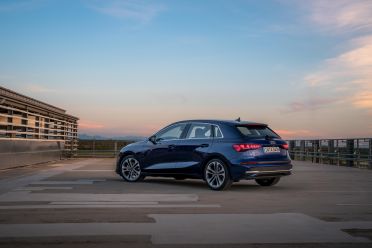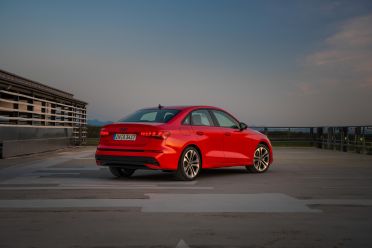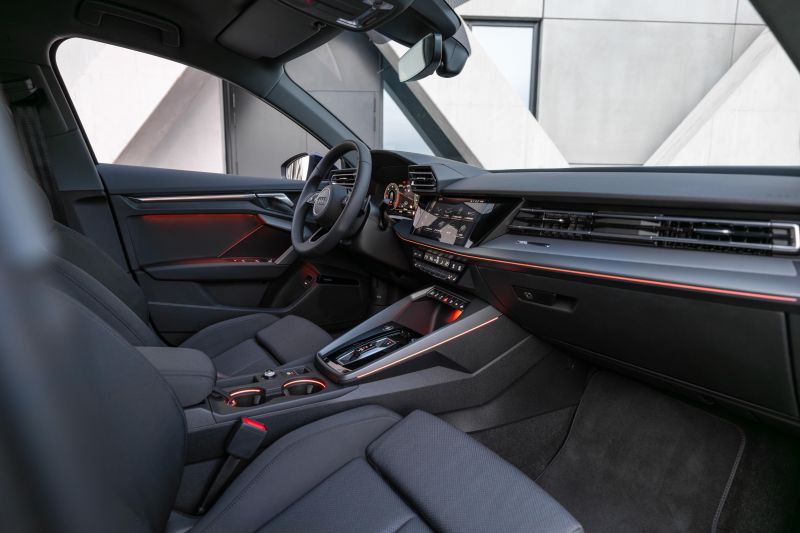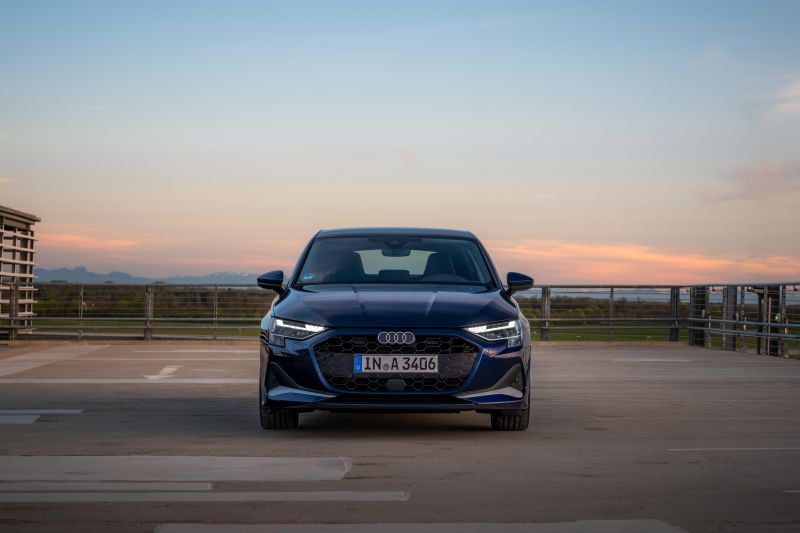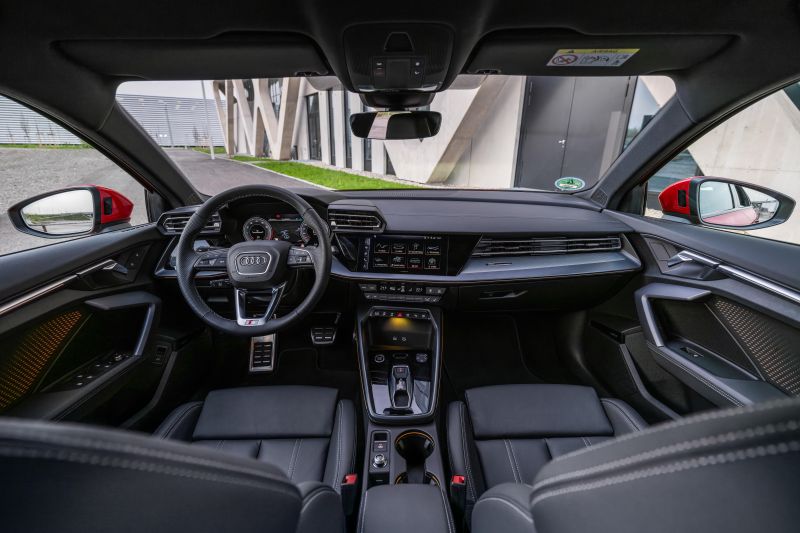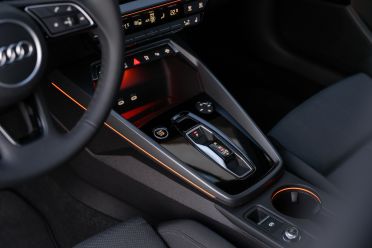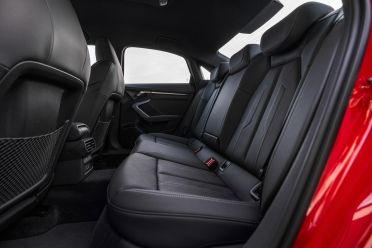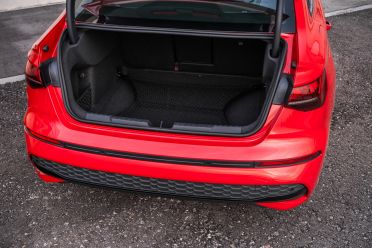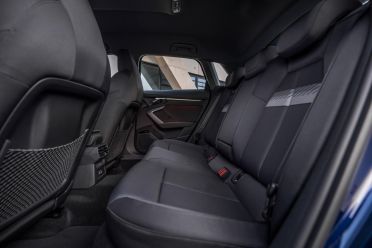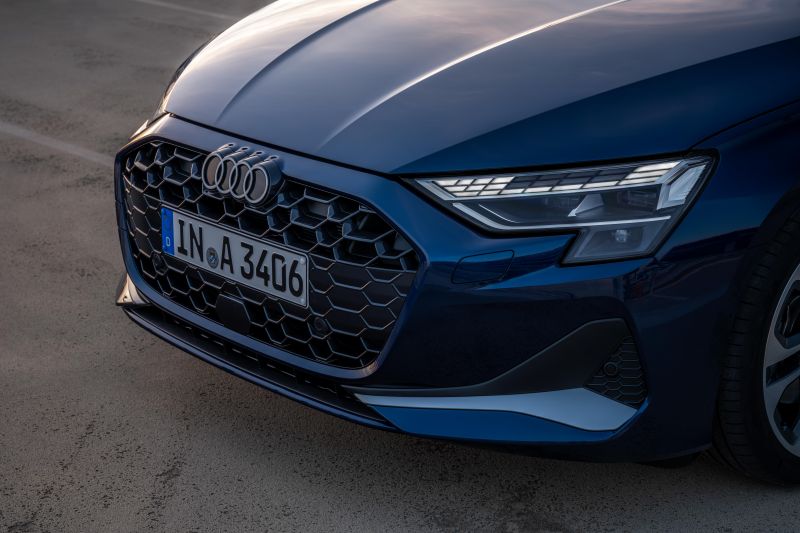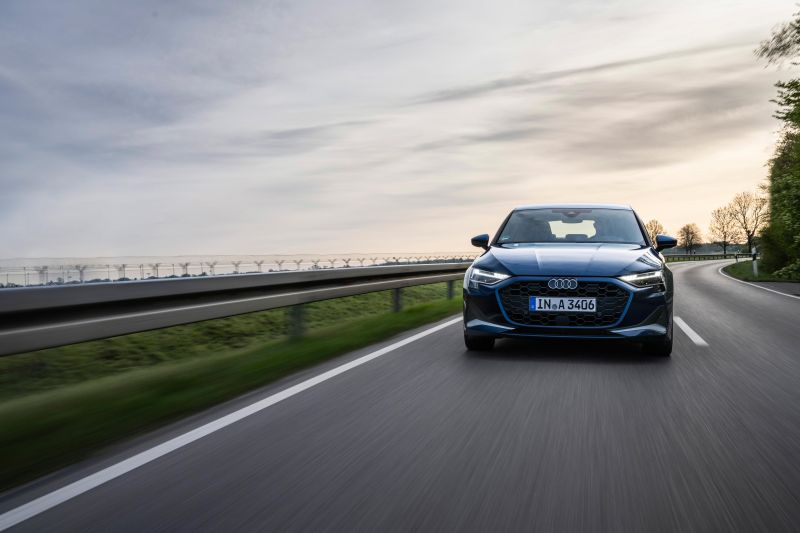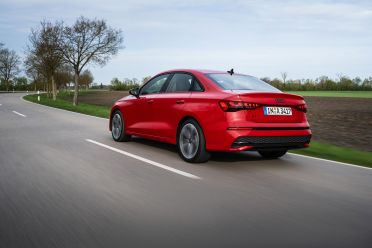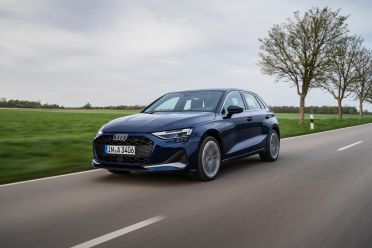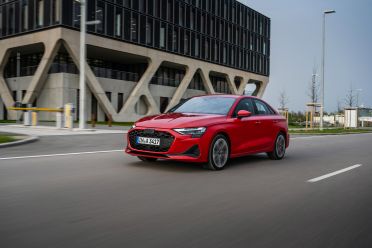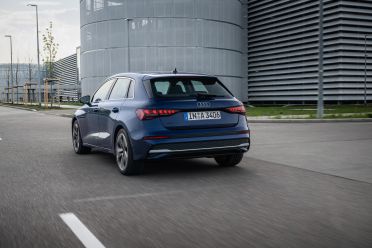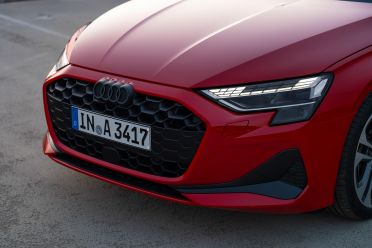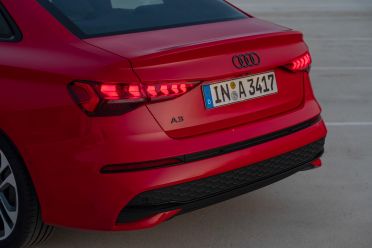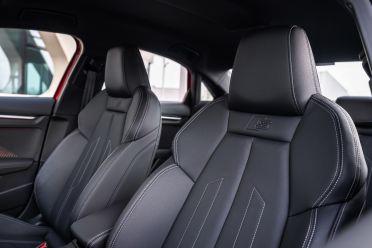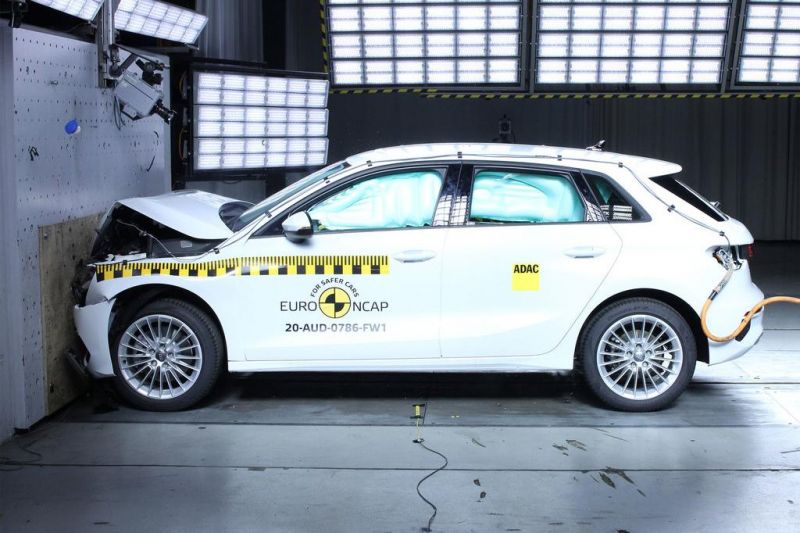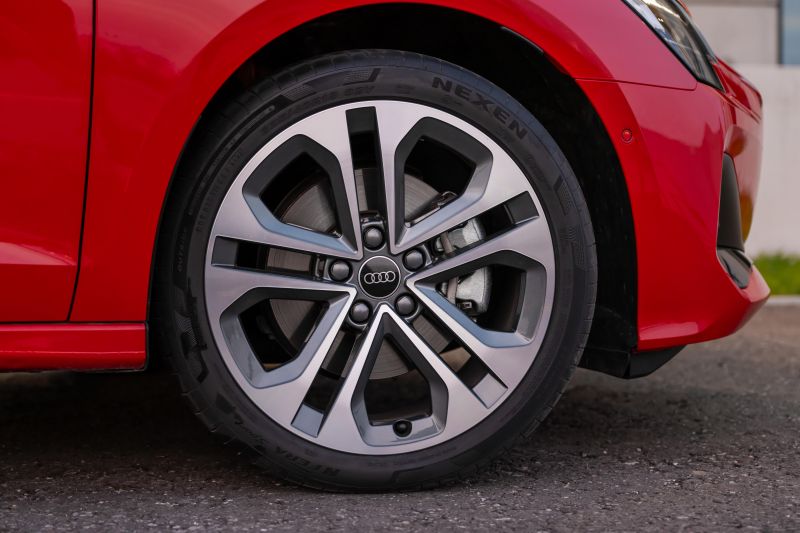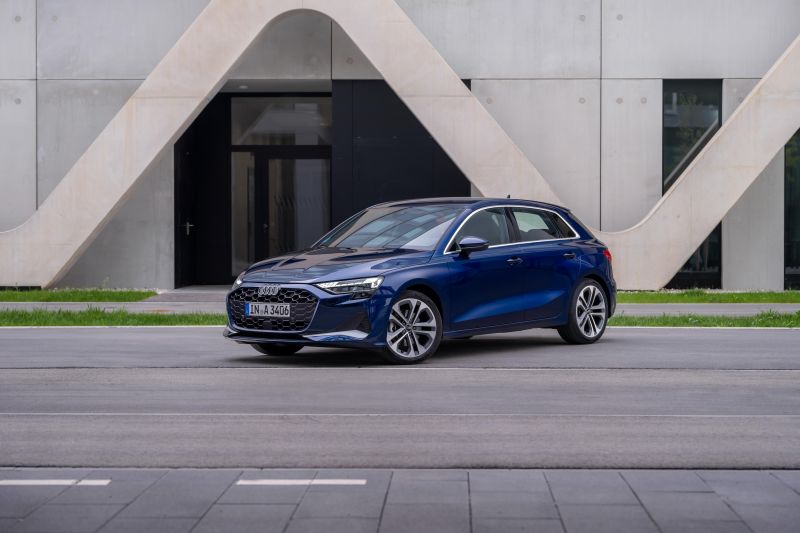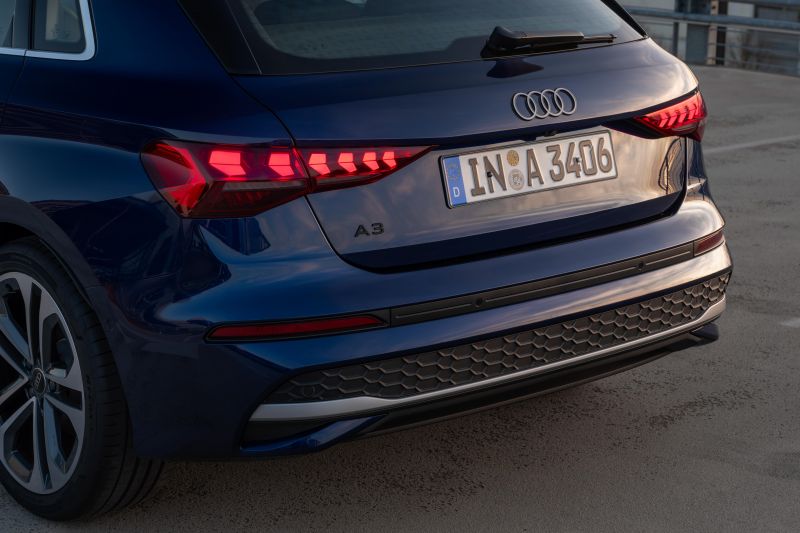Audi’s A3 has long been a popular gateway to the premium European motoring experience.
Though closely related to the Volkswagen Golf; different styling inside and out, higher standard equipment levels, and of course that iconic four-ringed badge have all conspired to deliver a car that’s perceived to be a cut above its cousin from Wolfsburg.
Audi has given the A3 a mild makeover for the 2025 model year. Changes to the exterior include a new front fascia that features a wider and flatter execution of the single-frame grille with body-coloured trim underneath, and redesigned taillight displays and a new rear bumper.
New LED headlights have 24-pixel elements arranged in three rows on their upper edge that allow owners to choose between four different digital daytime running light signatures using the MMI.
The alloy wheels have been redesigned, and four new paint colours are available: Arkona White, Arrow Gray pearl, and District Green and
Ascari Blue metallics.
These tweaks, and revisions to the A3’s interior, are all designed to make Audi’s compact premium car feel more premium.
How much does the Audi A3 cost?
Audi has not yet released any details on pricing as the updated A3 range isn’t not expected to arrive in Australia until the fourth quarter of this year.
As before, the A3 35 TFSI will be available in two body styles, Sportback and Sedan. Slightly more than 51 per cent of A3 buyers last year favoured the four-door Sedan over the five-door Sportback hatch, despite it costing about 4.6 percent more.
What is the Audi A3 like on the inside?
“Our main objective was to bring more quality into the car, to give it more charisma,” says product marketing chief Tobias Döbel of the improvements to the A3’s interior; which he acknowledges have been made in response to criticisms from customers that it did not look or feel premium enough.
The overall architecture of the cabin is unchanged, but there’s more fabric and less hard plastic than before.
Contour lighting runs around the redesigned centre console that sits under the 10.1-inch touchscreen at the centre of the dash, and the cup holders are illuminated.
An optional lighting package delivers backlit fabric panels on the front doors with 300 laser-cut openings that light up when unlocking that car. Owners can choose from 30 different light colours using the MMI.
Audi’s Virtual Cockpit instrument panel is now standard globally, and the toggle-like shifter on the new centre console has been replaced with a smooth lozenge that’s pushed or pulled to select reverse or drive.
Pulling it back twice puts the seven-speed dual-clutch transmission into Sport mode. The centre console now also houses a wireless charger for mobile phones.
The revised interior does look and feel more premium than before, but there are still some hard plastics evident, most notably the grab handles at the front of the front door armrests.
What’s under the bonnet?
The powertrain of the revised A3 35 TFSI carries over unchanged from the current model.
The mild-hybrid 1.5-litre turbocharged four-cylinder engine develops 110kW from 5000rpm to 6000rpm and 250Nm of torque from 1500rpm to 3500rpm, and drives the front wheels through a seven-speed dual-clutch transmission.
A belt-driven alternator starter (BAS) feeds the 48-volt electrical system and the compact lithium-ion battery located under the passenger seat. Under lift-off deceleration or light braking, the BAS can recuperate up to 12 kW and send it to the battery. When accelerating from low speeds the energy stored in the battery can be used by the BAS to send an extra 9 kW and 50 Nm of torque through the drivetrain.
Audi claims the MHEV system improves fuel consumption by up to 0.4L/100km. On the European WLTP cycle, the Sportback uses 5.8 to 5.2L/100km, while the Sedan’s consumption ranges between 5.7 and 5.2L/100km.
Audi also claims a 0 to 100km/h acceleration time of 8.1 seconds for the 2025 A3, a three-tenths of a second improvement over the current car. Top speed for the Sportback is 226km/h. The Sedan’s longer tail gives it a slight aerodynamic advantage at high speeds, allowing it to reach 231km/h.
The difference is a moot point in Europe, let alone on Australia’s heavily speed restricted roads. For the record, though, our A3 Sportback hit 200km/h with little fanfare on a short stretch of autobahn outside Munich.
How does the Audi A3 drive?
Of course, autobahn-storming is not what the A3 35 TFSI is all about.
If you want raw speed in an A3-sized package, you’ll need the 294kW and 500Nm of the 2.5-litre, five-cylinder RS3 under your right foot, or even 245kW and 420Nm from the new S3.
No, the standard A3 is all about relaxed highway cruising, with relatively low noise levels and a decent ride, the engine shutting down and the car coasting to conserve fuel.
It’s pleasantly quick on a winding country road, especially when you set the slick-shifting dual clutch transmission to manual mode and use the paddles to get the gear you want, when you want. And, it feels alert and responsive around town when the transmission is left to sort things out for itself.
Our tester was fitted with 18-inch wheels and Nexen Nfera Sport 225/40 tyres. Grip levels were good, at least on the billiard-smooth German backroads.
The steering weighting is lighter than that of the S and RS versions, but the front end responds concisely to inputs from the helm, the rear end tracking faithfully on the change of direction.
That said, the suspension felt slightly underdamped on occasion, and there was at times a noticeable inconsistency in brake pedal.
After discussion with Audi engineers, that problem was tracked down to the MHEV system’s handoff between regenerative and mechanical braking as it worked to recuperate kinetic energy and send it to the battery.
What do you get?
So far we only have details for the entry-level A3 35 TFSI – Audi Australia currently sells a 40 TFSI quattro S line as well.
A3 35 TFSI highlights:
- 18-inch alloy wheels
- LED headlights
- LED daytime running lights
- 4 signatures
- LED tail lights
- Keyless entry
- Audi Virtual Cockpit
- Power boot lid (Sedan only)
- Leather multifunction steering wheel
- Dual-zone climate control
- Comfort front-centre armrest
- 40:20:40 rear-seat backrest
- 10.1-inch MMI touchscreen
- Audi Connect Plus
- Apple CarPlay, Android Auto
Options include:
- Electric, heated front seats
- 4-way electric lumbar support
- Auto-dimming interior mirror
- 360-degree camera
- Power hatch (Sportback only)
- Panoramic glass roof
Is the Audi A3 safe?
The A3 35 TFSI was tested by ANCAP when the current fourth-generation model was launched in 2020 and earned a five-star rating.
It scored 89 per cent for adult occupant protection, 81 per cent for child occupant protection, 68 per cent for vulnerable road users and 73 per cent for safety assist.
Standard safety features include:
- Autonomous emergency braking (AEB)
- Pedestrian detection
- Cyclist detection
- Audi pre-sense basic
- Blind-spot monitoring
- Rear cross-traffic alert
- Safe exit warning
- Lane departure warning
- Lane keep assist
- Active lane assist
- Adaptive cruise control with stop and go
- Semi-autonomous parking assist
- Reversing camera
- Front, rear parking sensors
How much does the Audi A3 cost to run?
The A3 35 TFSI comes with a five-year, unlimited-kilometre warranty. Body and paint is also covered for five years, while corrosion is covered for 12 years.
Scheduled maintenance can be covered by an Audi Genuine Care Service Plan, which covers the car for five years or 75,000km, whichever comes first. Currently for the 35 TFSI the plan costs $2520.
CarExpert’s Take on the Audi A3
This mild refresh of the A3 isn’t going to shock anyone, and that’s probably a good thing.
We’d like slightly better rebound damping, the blending between recuperative and mechanical braking to be smoother, and the hard plastic bits at the front of the armrests to be trimmed with something softer. Otherwise there’s not a lot to complain about here.
The exterior styling tweaks make the car look a little cleaner and crisper than the outgoing model. And the upgrades to the interior – those armrest bits apart – have indeed made the compact Audi feel just a touch more upmarket.
If you want an affordable taste of premium European motoring, the 2025 Audi A3 is a good place to start.
Click the images for the full gallery
MORE: Buy a Audi A3
MORE: Everything Audi A3

